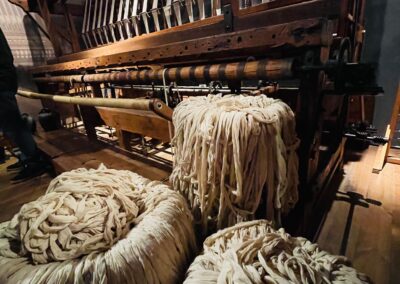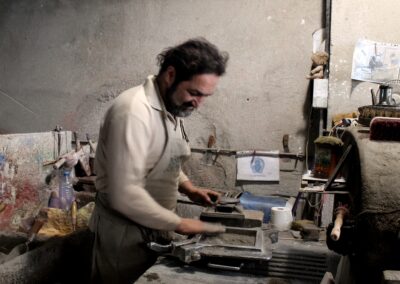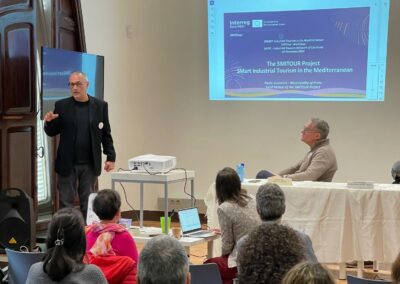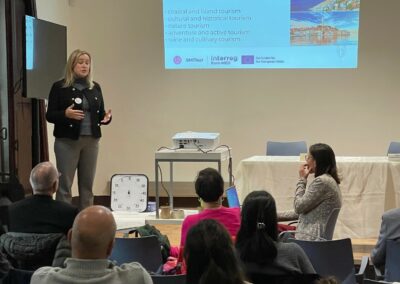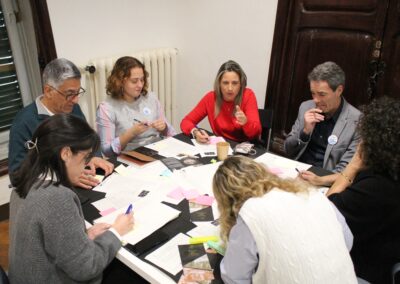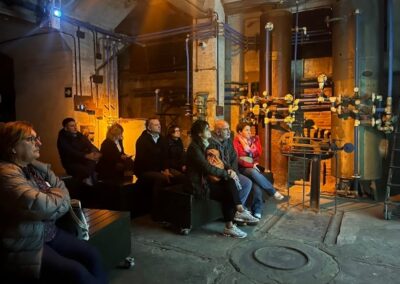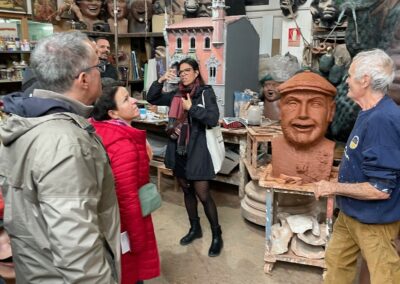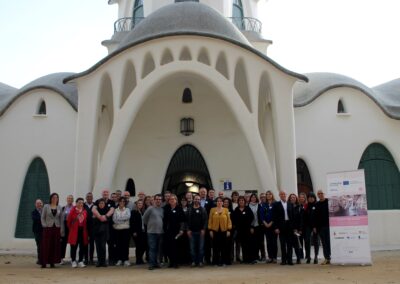
The 2nd SMITour project partners meeting took place in Terrassa on November 20 and 21, collaboratively organized by XATIC the Industrial Tourism Network of Catalonia and the Municipality of Prato as the Lead Partner. This two-day gathering featured a series of technical discussions, public event, and site visits that engaged the full partnership to collaborate on developing a more sustainable, intelligent, and innovative tourism model.
The first day kicked off with an engaging Steering Committee meeting at the Manresa Water and Textile Museum, where project partners showcased significant advancements in leveraging technology to enhance the tourist experience. They highlighted innovative digitization efforts and immersive solutions that transformed industrial heritage sites into captivating attractions. After the meeting, the partnership seized the opportunity to explore the museum, followed by a visit to Mosaics Martì, a fascinating tile manufactoring in Manresa, to explore the traditional process of creating hydraulic mosaics highlighting the important role of industrial heritage in the tourism landscape.
In the afternoon, the Masia Freixa building in Terrassa buzzed with energy as it hosted the co-design workshop “Challenges and Opportunities for Industrial Tourism in Catalonia,” attracting about 40 eager participants from museums, municipalities, and various companies within the network. Employing design thinking methodologies, attendees delved into innovative strategies for digitizing and promoting industrial tourism. The workshop’s success underscored the vital role of collaboration among diverse sector stakeholders in generating fresh and impactful ideas.
On the second day, the focus shifted to the project technical sessions in the morning as well as captivating following study visits that showcased how industrial heritage could serve as a cornerstone for tourism development. Partners groups first visited the National Museum of Science and Technology of Catalonia (MNACTEC) on Terrassa and then moved to Granollers and visited the Térmica Roca Umbert, and the Sarandaca workshop, where they uncovered inspiring examples of blending heritage with innovative tourism experiences. The visits and the active exchange between them allowed the partnership to summarise the main outcomes of the meeting, emphasising the urgent need to exploit immersive digital tools and to promote stronger collaborations between public authorities, private companies and local communities to promote sustainable development. They reached a consensus to continue advancing the Mediterranean Action Plan, which will be included in the next phases of the project and presented at future meetings.






